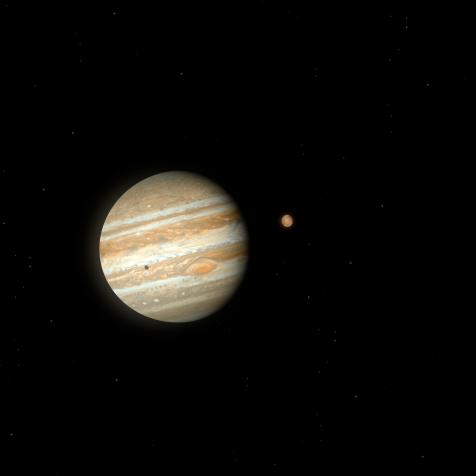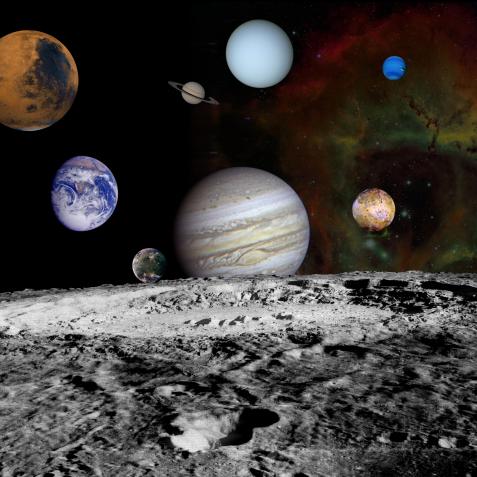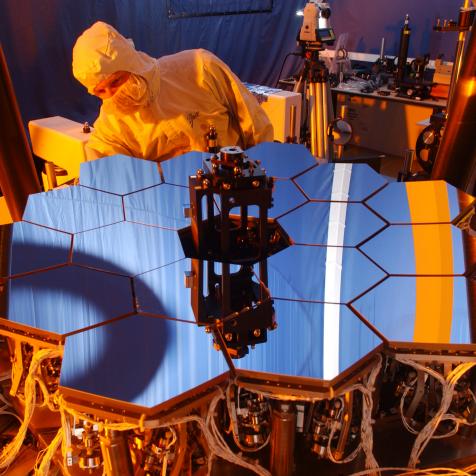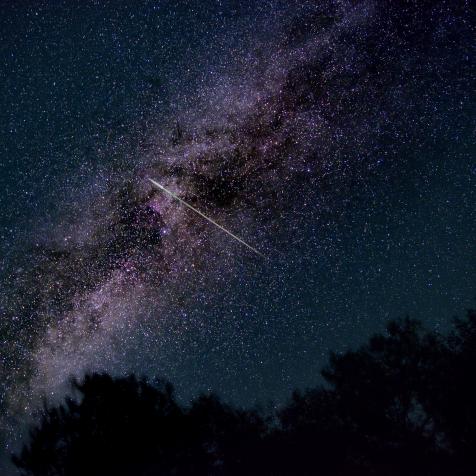
NASA's Goddard Space Flight Center/Chris Smith (USRA)
Like Stars? How About 6 in the Same Solar System?

Meet TYC 7037-89-1, a six-star solar system. Astrophysicist Paul M. Sutter explains this stellar surprise discovery.
You can imagine just how strange life here on Earth would be if we had two suns. Twin sunsets. Extra-scorching summers. Oddly mild winters. A complex rhythmic dance in the sky. Perhaps we’d never fully see the stars. It would be unfamiliar, alien, and probably uncomfortable.
Now imagine if we had six suns.

NASA's Goddard Space Flight Center
This schematic shows the configuration of the sextuple star system TYC 7037-89-1. The inner quadruple is composed of two binaries, A and C, which orbit each other every four years or so. An outer binary, B, orbits the quadruple roughly every 2,000 years. All three pairs are eclipsing binaries. The orbits shown are not to scale.
The best part: you don’t have to imagine it at all if you find a way to travel 1,900 light-years away to the TYC 7037-89-1 system, located in the direction of the constellation Eridanus. That system’s somewhat overcomplicated setup was revealed recently by NASA’s Transiting Exoplanet Survey Satellite (TESS), a mission on the hunt for planets orbiting other stars.
But in that hunt for other worlds, intriguing surprises turn up too, as in the case of TYC 7037-89-1 (and no, sorry, we don’t have a snappy nickname for it yet).
Astronomers have known of binary and multiple star systems for ages. Indeed, up to half the stars in the Milky Way may be a part of a multiple system. That’s because when clouds of gas and dust compresses to form stars, it’s very easy to form more than one at a time, like a litter of puppies. It’s easy because it takes a lot of things to go right to make a star in the first place (most importantly, getting a cloud of gas to cool down enough that it can compress in on itself and reach the densities needed to trigger star formation), and when the universe does something right, it tends to do it a lot.
Heck, even our own solar system almost became a binary. If Jupiter was merely 100 times more massive (which sounds like a lot, but really isn’t in the astronomy world), it would burn as a star itself.
But what makes TYC 7037-89-1 is its arrangement. There are a total of three separate binaries (pairs of stars orbiting each other), with the three binaries orbiting together in their own dance. First you have the “A” system, which consists of a sun-like star and a smaller companion orbiting each other every 1.3 days. Then you have the “C” system with a very similar composition, orbiting each other every 1.6 days.
The “A” and “C” binary systems orbit each other every four years.
Then comes the “B” system, which is another pair of stars (again, with the same buddying-up of a sun-like star with a smaller one) orbiting each other every 8.2 days.
To make it completely, the combined A-C system and the B system orbit a shared center every 2,000 years.

NASA's Goddard Space Flight Center/Chris Smith (USRA)
TESS previously revealed that Thuban, a former North Star, is also a eclipsing binary, as illustrated here. Three such pairs make up a newly discovered sextuple star system called TYC 7037-89-1.
We don’t know if any planets could survive that complicated stellar waltz. Any worlds may be quickly forced into unstable trajectories, sending them either hurtling into the depths of space or crashing into one of the stars. But it might be possible for some lucky planets to carve out a stable existence, weaving and winding its way between or around the pairs of stars.
And if those worlds have any inhabitants, they probably have a tough time scheduling their day.



















